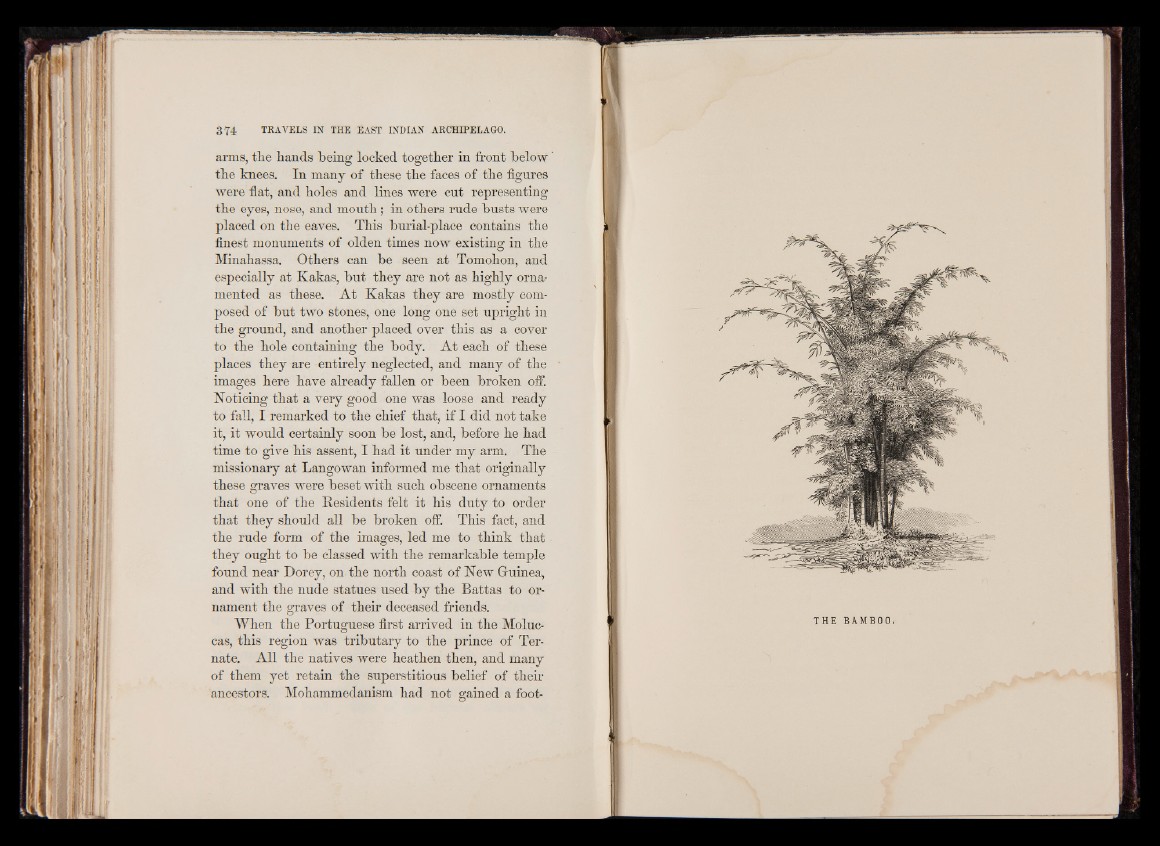
arms, the hands being locked together in front below
the knees. In many of these the faces of the figures
were flat, and holes and lines were cut representing
the eyes, nose, and mouth; in others rude busts were
placed on the eaves. This burial-place contains the
finest monuments of olden times now existing in the
Minahassa. Others can be seen at Tomohon, and
especially at Kakas, but they are not as highly ornamented
as these. At Kakas they are mostly composed
of but two stones, one long one set upright in
the ground, and another placed over this as a cover
to the hole containing the body. At each of these
places they are entirely neglected, and many of the
images here have already fallen or been broken off.
Noticing that a very good one was loose and ready
to fall, I remarked to the chief that, if I did not take
it, it would certainly soon be lost, and, before he had
time to give his assent, I had it under my arm. The
missionary at Langowan informed me that originally
these graves were beset with such obscene ornaments
that one of the Residents felt it his duty to order
that they should all be broken off. This fact, and
the rude form of the images, led me to think that
they ought to be classed with the remarkable temple
found near Dorey, on the north coast of New Guinea,
and with the nude statues used by the Battas to ornament
the graves of their deceased friends.
When the Portuguese first arrived in the Moluc-
cas, this region was tributary to the prince of Ter-
nate. All the natives were heathen then, and many
of them yet retain the superstitious belief of their
ancestors. Mohammedanism had not gained a foot-
T H E BAMBOO,